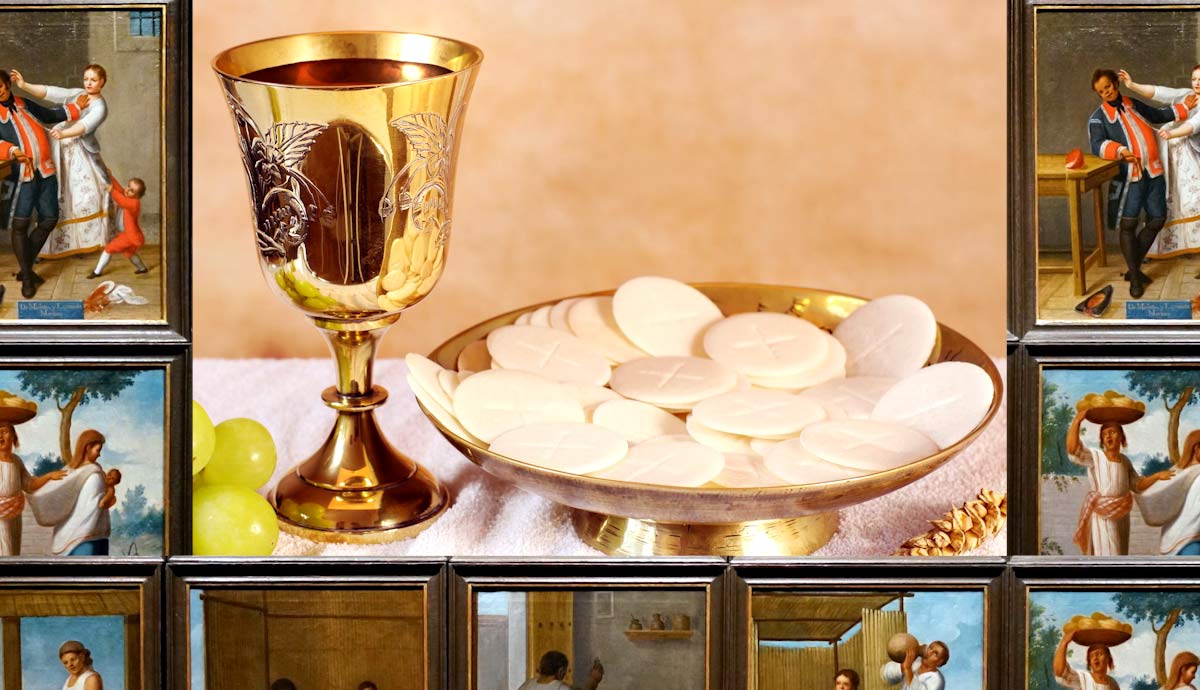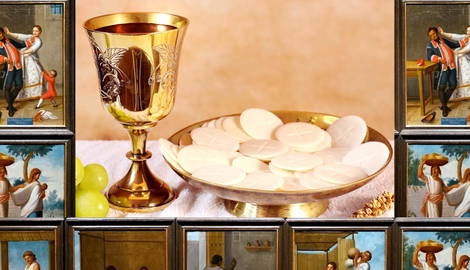
Discrimination has been the most enduring scourge of human psychological history. In a few eras has it been more apparent than during the so-called Age of Discovery. As European kingdoms colonized regions across the globe, they began to fixate on the qualities and customs of the people they encountered. They also entrenched their own biases, convinced that European culture and Christianity were superior to all others. This is the context in which the doctrine of limpieza de sangre (“purity of blood”) arose in 15th-century Spain. Faced with changing demographics and territorial expansion, Spanish society developed a hierarchical system of privilege based on religious affiliation and genealogy.
The Reconquista and the Birth of Limpieza de Sangre

In the mid-15th century, Spain was not a unified country. Instead, it was a collection of occasionally allied, largely autonomous kingdoms. As the 15th century went on, two of these kingdoms, Castile and Aragon, established themselves as the dominant powers in the Iberian Peninsula. A unified Spanish state really emerged after the wedding of Ferdinand II and Isabella I in 1469. The newlywed “Catholic Monarchs” quickly set about their mission to reclaim the region from the local Muslims. By 1493, this goal would be accomplished.
Islamic Spain was a multi-religious society. Christians, Jews, and Muslims all called the Iberian Peninsula home. They mostly lived within their own communities but did intermingle to trade. When Isabella and Ferdinand conquered the region, they were faced with the reality of ruling a religiously divided country. Staunchly committed to the Roman Catholic Church, the monarchs wanted to impose religious uniformity in their domains. Muslims and Jews were given three options — convert to Catholicism, leave Spain, or die.

Many Muslims and Jews complied with royal decrees and became at least nominally Catholic. Some of these Moriscos and Conversos (respectively) had been successful in business, occupying important roles in pre-Reconquista society. Between this wealth and age-old Christian theological prejudices, Spanish Catholics resented their Muslim and Jewish neighbors.
The doctrine of limpieza de sangre came to dominate discourse during this period of conquest and religious chaos. Clerics and officials propagated the idea of a religious hierarchy based on descent. At the top of this hierarchy were the “Old Christians”— Spanish people who could trace their families’ Catholicism as far back as possible. Although many Moriscos and Conversos had actually become committed Catholics, it was believed that their Muslim or Jewish ancestry had tainted their bloodlines. No matter how devoted they were to the Catholic Church, these “New Christians” would always be inferior to those with established Christian genealogies.
Why did blood and lineage matter so much in Spain? To answer this question, we have to delve into their place in the bedrock of early modern Spanish life — Christianity.
Blood, Renewal, and Betrayal in Spanish Christianity

While Western societies are known today for their individualistic ways, this was not the case in the 15th and 16th centuries. Social unity was far more important than any one person’s identity. At the core of a person’s social identity were family and religion. In Spanish notions of personhood and community, blood definitely mattered.
Why was blood so important in pre-modern Spain, though? Much of it can be traced through Catholic Christianity. According to Church teachings, Jesus Christ had shed his blood for the salvation of humankind. The Church also upheld the doctrine of transubstantiation — the idea that the Eucharist and sacramental wine literally became “the body and blood” of Jesus during communion. Other Christian denominations have interpreted “body and blood” in more allegorical ways, but this does not diminish the importance of blood to Christianity’s most crucial figure.

Christianity is the only one of the Abrahamic religions to exalt the status of blood in such a way. As Rachel L. Burk illustrates, Islamic and Jewish scriptures explicitly ban the consumption of blood or blood products (Burk, 2010). On top of its importance to Christian theology, ordinary Europeans encountered blood wherever they went. Death — whether human or animal — occupied nearly every space in pre-modern Europe. Blood in Spanish culture held both medical and symbolic meanings.
One major reason why limpieza de sangre caught on so intensely in pre-modern Spain also had to do with anti-Jewish prejudices. Christians at the time commonly interpreted the Bible as blaming the Jewish people for Christ’s execution (deicide). This was true across Europe. Islam was reviled for different reasons, but like Judaism, it was seen as a threat to the one true faith of Jesus Christ.
Limpieza de Sangre and the Inquisition

Limpieza de sangre was a social doctrine, but it was even more so a legal one. Statutes from 1449 onwards illustrated Spanish Christian prejudices against Iberian Jews. Clerics and government officials described Jews in stereotypical terms. The forced conversion of thousands of Jewish people to Catholicism only added to conspiratorial thinking. These “cursed” people were now enemies within the Christian faith — and consequently enemies of the state.
As baptized Catholics, Conversos (and later Moriscos, as well) fell under the jurisdiction of the Spanish Inquisition. Formed in 1478, scholars have disagreed about the Inquisition’s original purpose. Over time, however, it clearly became a vehicle for the Spanish Crown to enforce religious orthodoxy. In order to obtain an Inquisition or a government office, candidates had to provide evidence of their limpieza de sangre. Long records exist in Spanish archives of Inquisition testimonials regarding limpieza de sangre, backed up by genealogical research.
Blood Purity in the New World: The Case of Mexico

The 16th century would bear witness to Spain’s most daring geopolitical feat: the conquest of the Americas. The Spanish monarchy and the conquistadores would establish the most important global empire of the time. As colonial rule solidified, notions of limpieza de sangre were imported to justify religious and ethnic hierarchy. Nowhere was this more apparent than in Mesoamerica, particularly in New Spain (modern Mexico).
Authorities, spearheaded by Inquisitor General Diego de Espinosa, had established the Mexican Inquisition in 1571. Espinosa had previously authored a book of instructions on how to judge inquisitorial candidates on their limpieza de sangre (Chuchiak, 2012). However, limpieza de sangre didn’t always mean the same thing in the Mesoamerican context as it had in Europe. It adjusted to suit the dramatically different demographic and cultural realities of New Spain.

As the most important of Spain’s colonies in North America, Mexico was arguably the center of the Spanish Empire. Indigenous Mesoamericans, while heavily depleted after the Spanish conquest, still maintained a large presence. Spanish settlers were quickly joined by enslaved Africans. By the 17th century, a smaller number of Southeast Asians would also arrive through New Spain’s port cities. If Spanish authorities wanted to maintain limpieza de sangre, they would have to expand its scope.
Casta Paintings: Categorizing Colonial Society

One area where limpieza de sangre came to dominate was in 18th-century Mexican art. Amid the Enlightenment in Europe and Mexico City, elite Spanish painters preoccupied themselves with categorizing the ethnic makeup of colonial society. Spanish-born elites and Mexican-born ethnic Spaniards alike wanted to demonstrate their limpieza de sangre. Their solution was to create what would later become known as casta paintings. (Casta means “lineage” in Spanish).
Casta paintings give a fascinating glimpse into the artistic trends of 18th-century New Spain, in particular. Spanish painters went to painstaking lengths to create a taxonomy of interracial unions in their artwork. For example, the child of a Spanish man and a Native Mexican woman was termed a mestizo/mestiza. Children born to two mixed-race parents were given even more specific labels. In colonial Mexico, a person’s limpieza de sangre had evolved to depend on how much Indigenous or African ancestry they had. No other region of the Spanish Empire was as obsessed with racial and ethnic classification.

Yet did casta paintings reflect the reality of interethnic marriages in colonial Mexico? That doesn’t seem to be the case. We have no way of knowing how multiracial New Spanish residents identified themselves. Inquisition and governmental records do use some of the terms from casta paintings, but not in a standardized way. Instead, the terms used in casta paintings reflect the artistic and elite preoccupation with limpieza de sangre in colonial life.
Limpieza de Sangre: A Case of Early Modern Racism?

The history of limpieza de sangre is a history of discrimination. It originated in Spain as a legal and religious method of categorizing Jewish and Muslim converts to Christianity. And in Mexico, it evolved to focus on ethnic or racial admixture. This begs the question: could we consider limpieza de sangre as a precursor to modern racism?
That is hard to say. Limpieza de sangre definitely represents a turn in the history of discrimination towards a more innate form of hatred. Yet labeling it as being of the same variety of hatred that led to atrocities like the Holocaust seems simplistic. Spanish colonial elites may have been fixated on racial classification, but they lacked the logistical means to control ethnic intermingling everywhere. Complete societal control wasn’t possible.
So, was limpieza de sangre a kind of proto-racism? That argument could definitely be made. But equating it with the pseudo-scientific racism of the 19th and 20th centuries might be too dramatic a step. Instead, limpieza de sangre should be studied in the contexts it formed and evolved in.
Further Reading
Chuchiak IV, John F., ed. The Inquisition in New Spain, 1536-1820: A Documentary History. Baltimore: The Johns Hopkins University Press, 2012.
Martínez, María Elena. Genealogical Fictions: Limpieza de Sangre, Religion, and Gender in Colonial Mexico. Stanford: Stanford University Press, 2008.










